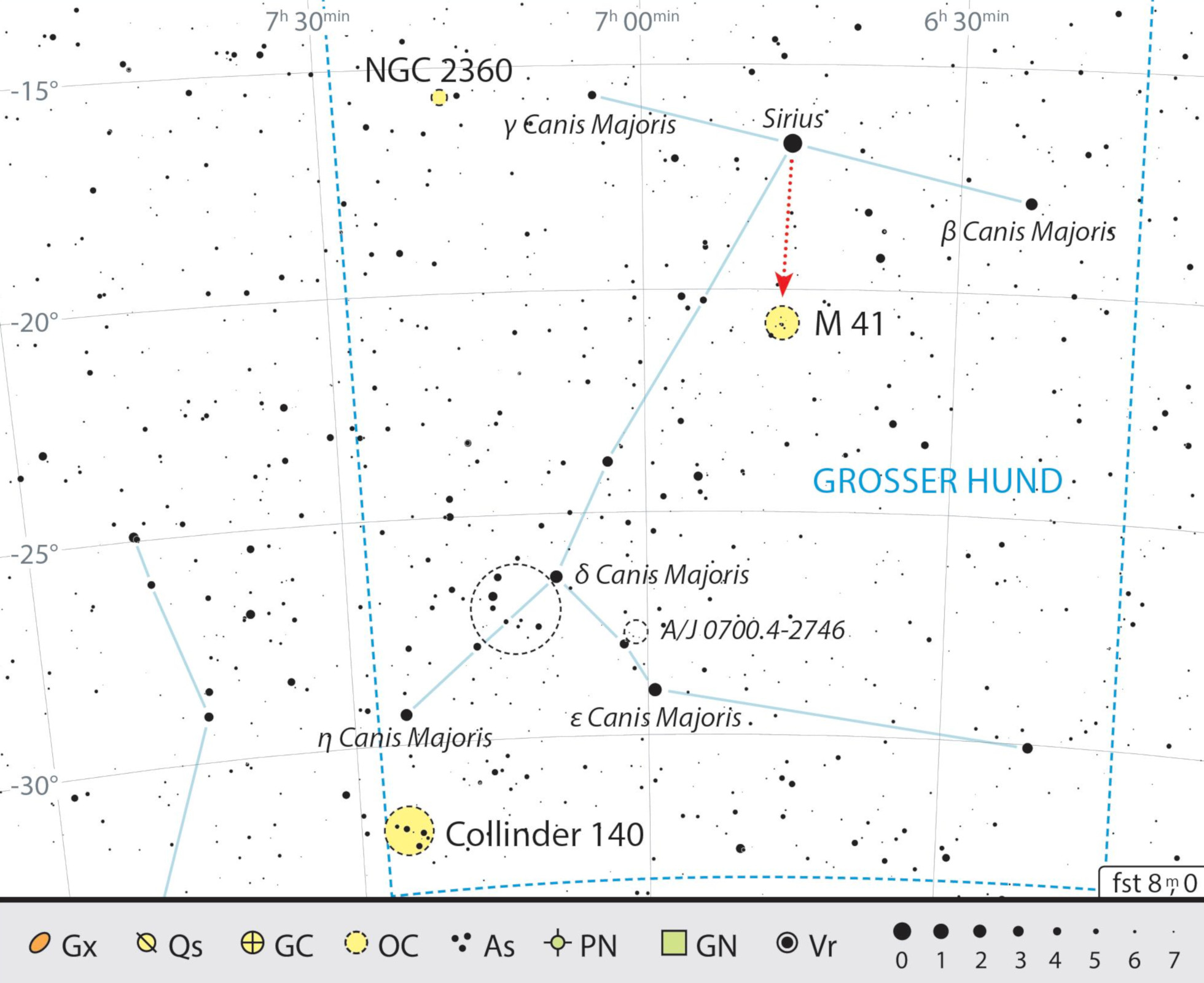All sorts of clusters
Canis Major is close to the horizon and hides a nameless asterism and a Collinder cluster between its paws.
 The constellation of Canis Major contains open clusters from different catalogues, all visible with binoculars. Rolf Löhr/CCD Guide
The constellation of Canis Major contains open clusters from different catalogues, all visible with binoculars. Rolf Löhr/CCD GuideOn clear winter nights, Sirius, the brightest star in our night sky, forms the southern point of the Winter Hexagon. And if the seeing at the horizon allows, we should use it to start our tour of the more southerly regions of the constellation of Canis Major.
Highlights around the Dog Star
If you wander around 7.5° to the east of Sirius, you will come across the open cluster NGC 2360. If you have any problems locating it, you can use γ CMa as an aid; then it is only a little more than 3° away. A very useful way of estimating distances is to know the apparent field of view of your binoculars.
When you arrive at the only NGC cluster of our tour, you will see a fairly bright nebulous area, which looks slightly grainy depending on the seeing and your optical device.
Messier 41, the brightest and most famous cluster in Canis Major, is even easier to find. It’s 4° south of Sirius. When the seeing is good, it appears completely resolved and about the size of the full Moon. Individual stars seem to have joined together into groups or chains.
Around the dog’s paws
If you get the chance to observe from more southerly latitudes, or are prepared to struggle through the haze at the horizon, then you should definitely head even further south to the "dog’s paws" around ε and η CMa, and look out for Collinder 140. The cluster is located 2.5° south of η CMa and appears as an elongated object whose brightest 7–8 stars resemble a fish or a tadpole.
Probably not a physical object, but still beautiful: around eight stars with a brightness of magnitude 4 to 6 form a semicircular shape around 1.5° east of Wezen or δ CMa. It looks a little like an inflated kite of a kite surfer. According to my research, this asterism has not yet been documented in any catalogue – so how about we call it Wezen's Power Kite?
If you head away from Wezen in the direction of Adhara or ε CMa, you will reach σ CMa after 2°. With binoculars, surrounding it on its western side you will see a nearly full Moon-sized group of around nine stars between magnitude 7 and 9, catalogued as asterism A/J 0700.4-2746. In binoculars, it really looks like a cluster, although this impression disappears at higher magnification.
 Location map of objects for binoculars in the constellation of Canis Major. J. Scholten
Location map of objects for binoculars in the constellation of Canis Major. J. ScholtenAuthor: Kay Hempel / Licence: Oculum-Verlag GmbH
